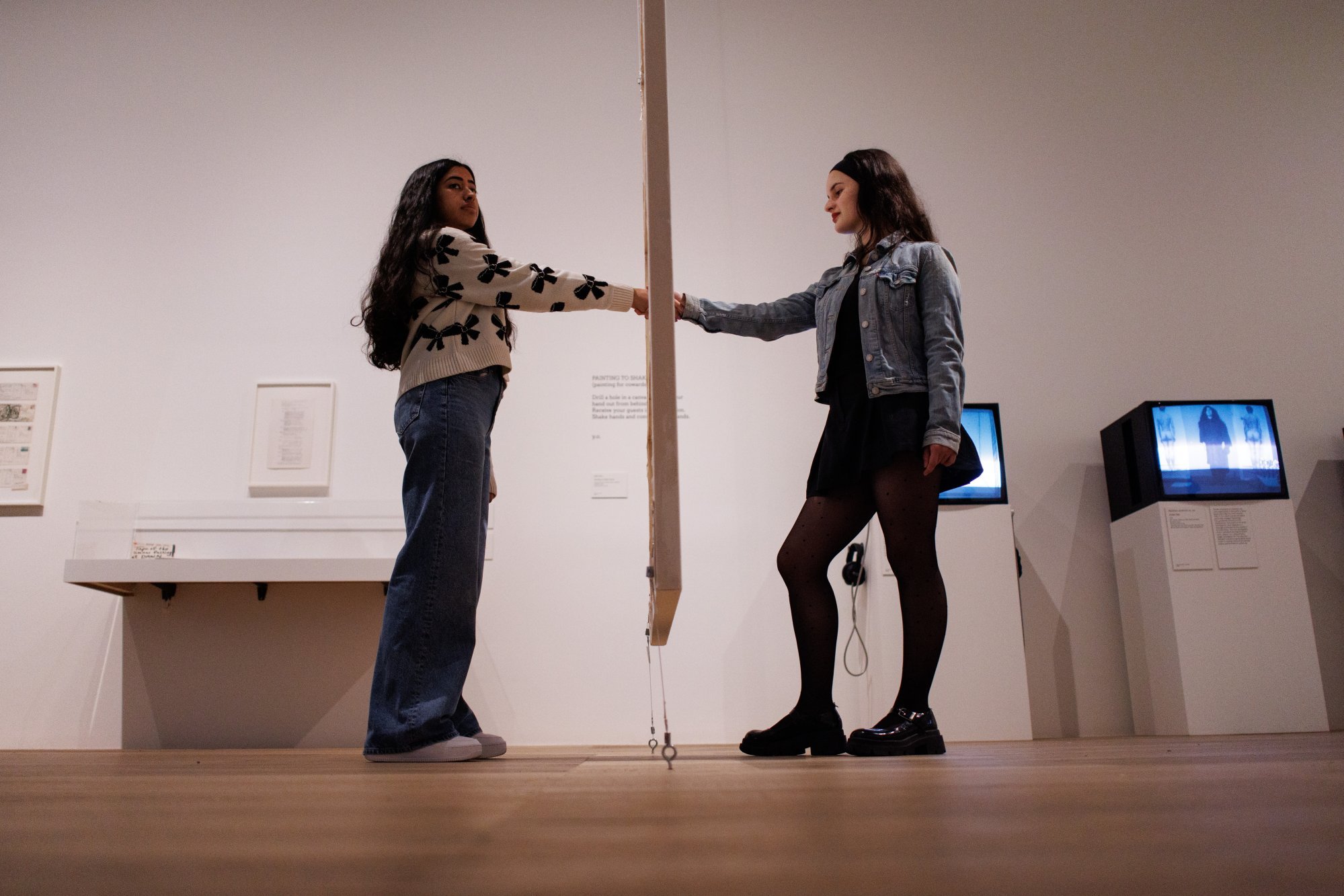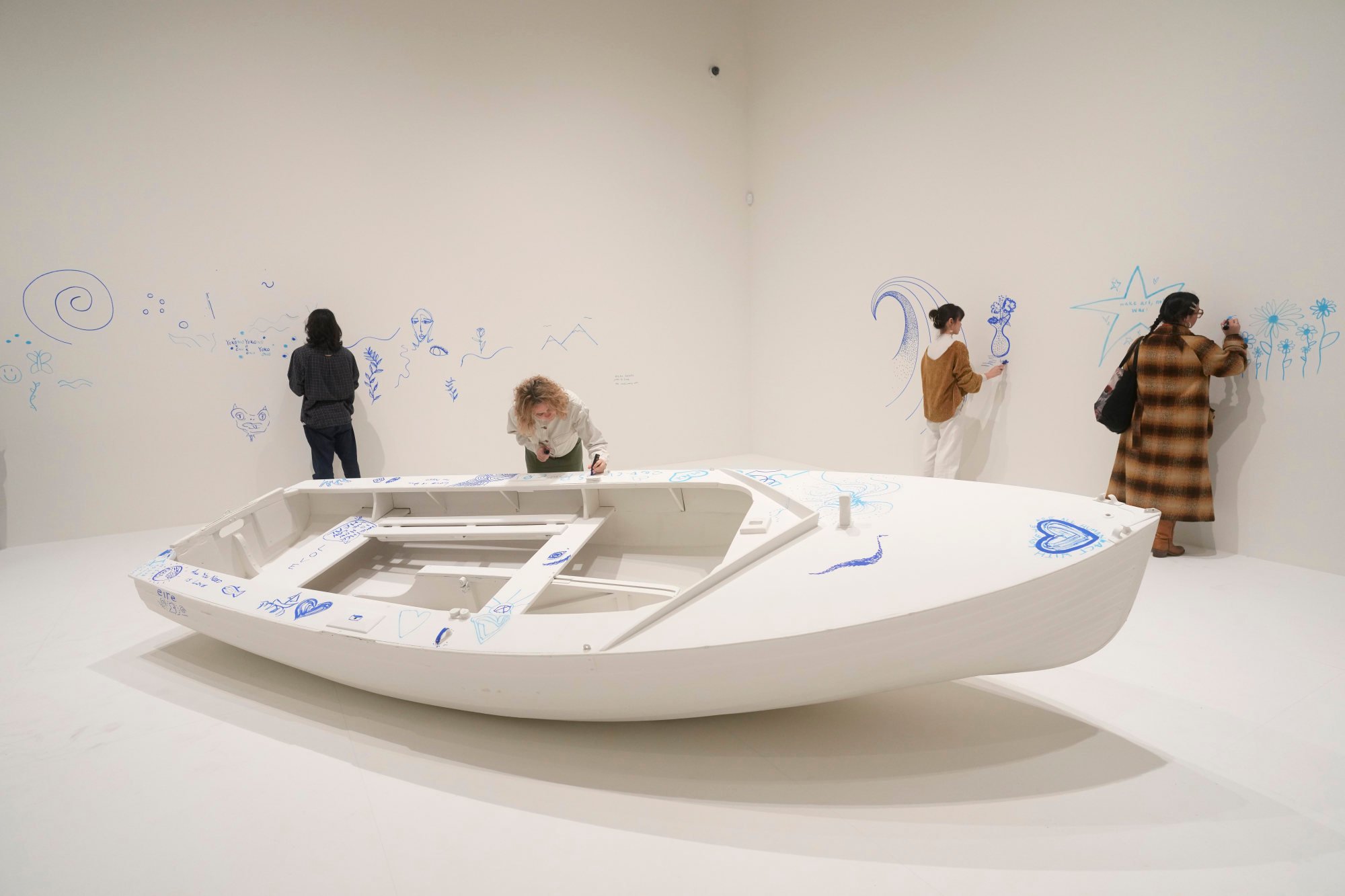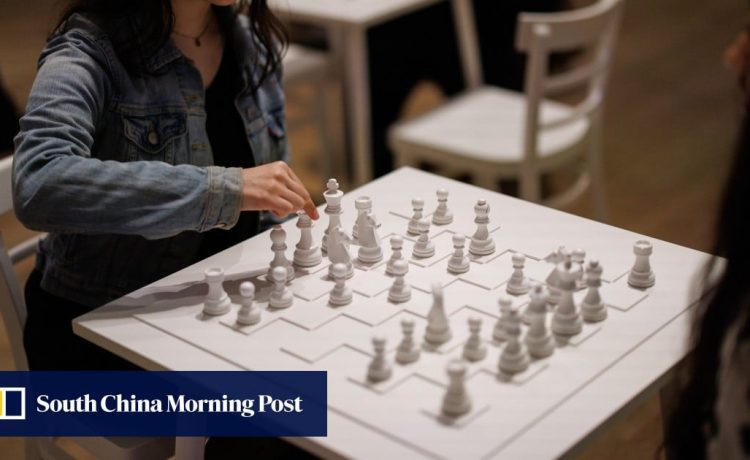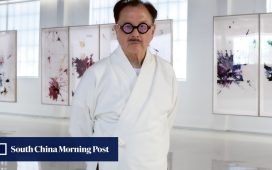More than 200 artworks – including film, music, soundscapes, paintings, drawings and sculptures – trace Ono’s career from 1950s and 1960s New York, where her flat became a hang-out for bohemian artists, to Japan, where she brought together artists from the East and West.

Then it’s on to London, where Ono met the movers and shakers of Swinging Sixties counterculture – including, fatefully, Lennon, who came to see her show at a London gallery.
“It was really important to give that kind of texture and set the foundation of how she developed her practice before she came to London – before the moment of meeting John Lennon,” co-curator Juliet Bingham said this week at a preview of the exhibition. “She was really at the forefront of conceptual art.”

Ono’s art was interactive long before that was all the rage.
In her landmark 1964 performance Cut Piece, she gave gallery visitors scissors and invited them to snip away at her clothes.
In this show, visitors can stomp on Work to be Stepped On, hammer a nail into canvas, trace their shadows on a wall, shake hands through a hole in Painting to Shake Hands and play chess with a set where all the pieces are white – “playing for as long as you remember what your pieces are”, Bingham said.
“That very much is emblematic of her ongoing campaign for peace,” the curator said. “It becomes about participation and something other than winning.”

Visitors also can ponder Ono’s many “instructions” pieces, which she began creating in the 1950s. Gallery walls are lined with bits of paper suggesting “Listen to the sound of the earth turning”, “Watch the sun until it becomes square” and other enigmatic prompts.
It’s occasionally hard to know whether Ono is being intentionally funny with instructions like “Imagine letting a goldfish swim across the sky … Drink a litre of water.”
Other pieces show her cheeky humour – literally so in Film No. 4 (Bottoms), a montage of 200 posteriors that was banned in 1960s Britain. It’s shown alongside photos of Ono protesting outside the censor board with a bouquet of flowers and a poster adorned with bums.
For an exhibition at New York’s Museum of Modern Art in the 1970s, Ono falsely claimed to have released hundreds of flies soaked in perfume for gallery visitors to find.

Ono’s relationship with Lennon took her peace message and avant-garde art to an audience of millions, but also cast her in the unwanted role – to some fans – of the woman who broke up The Beatles.
The exhibition includes the couple’s War is Over hoarding and footage of their famous 1969 Montreal bed-in, as well as an earlier work in which they sent world leaders pairs of acorns, asking them to plant “oak trees for world peace”. Politicians’ terse typed replies are displayed alongside.
Despite the often sexist and racist barbs directed her way, Bingham says Ono flourished creatively alongside Lennon.

“She talks about them both crossing over into each other’s fields – from avant-garde left field, where she was coming from in New York and Japan, and from left-field rock’n’roll,” Bingham said. “They inspired and contributed to each other’s lives in a really positive and fruitful way.”
In the more than four decades since Lennon’s death, Ono has continued to create works steeped in humanism and cries for peace. The Tate show includes Wish Trees, with branches where visitors can hang messages of hope.
One of the final rooms is devoted to Add Color (Refugee Boat), a wooden boat painted white in a white-walled room. Markers are supplied for visitors to add words or images. Several have already written: “All you need is love.”
“Yoko Ono: Music of the Mind” runs until September 1 at the Tate Modern, in London.






